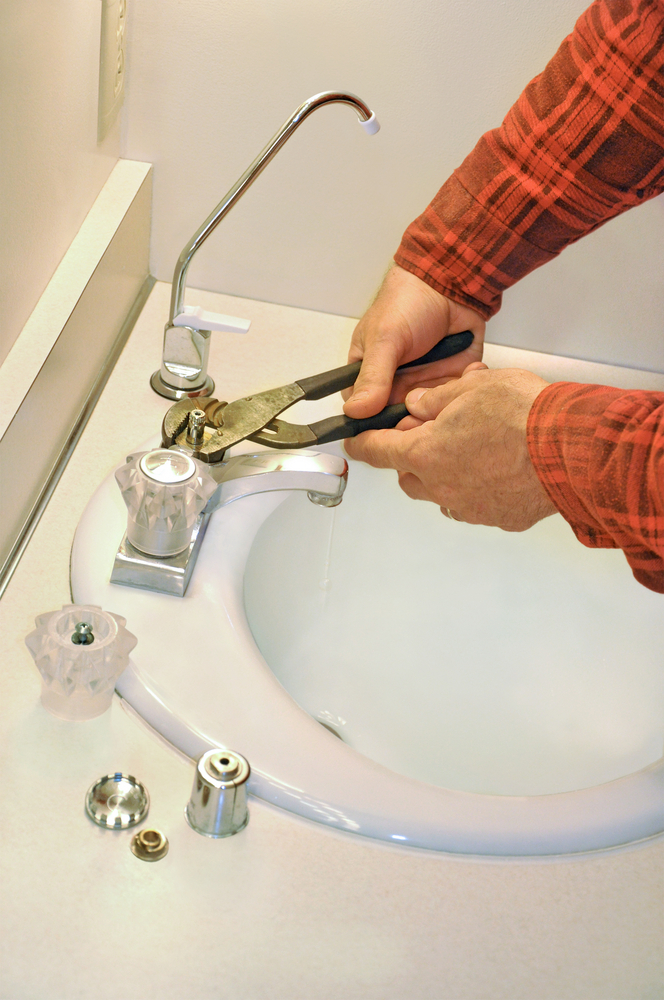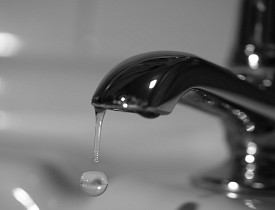Factors Why It's Essential to Repair a Malfunctioning Faucet
Factors Why It's Essential to Repair a Malfunctioning Faucet
Blog Article
Here underneath you can find additional first-rate news concerning 4 Common Reasons for a Leaky Faucet.

Dripping faucets could look like a minor aggravation, however their influence surpasses just the annoyance of the audio. From drainage to sustaining unnecessary economic expenses and wellness threats, ignoring a leaking tap can cause various consequences. In this post, we'll look into why it's critical to address this usual home concern quickly and properly.
Waste of Water
Ecological Effect
Leaking taps add significantly to water wastefulness. According to the Environmental Protection Agency (EPA), a solitary tap dripping at one drip per second can throw away more than 3,000 gallons of water per year. This not only pressures water resources but also affects ecological communities and wild animals based on them.
Step-by-Step Overview to Fixing a Dripping Tap
Devices Needed
Prior to attempting to fix a trickling faucet, collect the necessary devices, consisting of an adjustable wrench, screwdrivers, replacement parts (such as washing machines or cartridges), and plumber's tape.
Usual Tap Issues and Their Solutions
Recognize the kind of faucet and the particular problem triggering the drip. Common troubles include worn-out washers, rusty valve seats, or faulty O-rings. Describe supplier guidelines or on-line tutorials for step-by-step support on fixings.
Financial Prices
Raised Water Expenses
Beyond the environmental impact, dripping taps can inflate water expenses substantially. The accumulated wastage in time translates right into higher utility costs, which could have been stayed clear of with prompt repair services.
Prospective Home Damages
Moreover, prolonged trickling can result in damage to fixtures and surface areas surrounding the tap. Water accumulation can cause discoloration, deterioration, and even structural issues if left unattended, leading to extra fixing costs.
Health Worries
Mold And Mildew and Mildew Growth
The consistent presence of wetness from a trickling faucet develops a perfect atmosphere for mold and mildew and mold growth. These fungi not just endanger indoor air top quality however likewise pose health threats, specifically for people with breathing conditions or allergies.
Waterborne Illness
Stagnant water in trickling taps can come to be a breeding ground for germs and various other virus, raising the threat of waterborne conditions. Pollutants such as Legionella microorganisms grow in stationary water, possibly bring about significant ailments when consumed or inhaled.
Do it yourself vs. Specialist Repair service
Pros and Cons of Do It Yourself Fixing
While some might attempt to take care of a leaking faucet themselves, do it yourself repair services feature their very own collection of obstacles. Without correct expertise and devices, do it yourself efforts can exacerbate the problem or lead to insufficient repair services, extending the problem.
Benefits of Employing a Professional Plumber
Hiring a specialist plumber ensures that the underlying root cause of the trickling faucet is resolved efficiently. Plumbing technicians possess the expertise and equipment to detect and fix faucet issues efficiently, conserving time and decreasing the risk of further damages.
Environmental Responsibility
Individual Contribution to Conservation
Taking duty for dealing with leaking faucets straightens with broader initiatives toward water preservation and environmental sustainability. Every individual's actions jointly make a considerable influence on protecting priceless resources.
Lasting Living Practices
By prioritizing timely repair work and embracing water-saving behaviors, individuals add to lasting living practices that profit both existing and future generations.
Safety nets
Normal Maintenance Tips
To stop trickling faucets, carry out regular upkeep such as cleansing aerators, examining for leakages, and replacing damaged components promptly. In addition, consider installing water-saving tools or upgrading to more efficient fixtures.
Significance of Prompt Services
Resolving trickling taps as soon as they're seen stops further water wastefulness and possible damage, ultimately conserving both water and money in the long run.
Impact on Property Worth
Understanding of Well-Maintained Residential Property
Keeping a home in good condition, consisting of attending to maintenance issues like dripping faucets, enhances its perceived value and worth amongst prospective purchasers or renters.
Influence on Resale Value
Qualities with well-maintained plumbing fixtures, including faucets, command greater resale values in the realty market. Attending to leaking faucets can contribute to a favorable impact throughout residential property assessments and settlements.
Final thought
Attending to a dripping tap exceeds mere ease; it's a necessary action towards saving water, reducing financial costs, and safeguarding health and home. Whether with DIY repair work or expert assistance, acting to fix leaking taps is a little yet impactful way to promote accountable stewardship of resources and add to a healthier, a lot more lasting future.
How to Fix a Leaky Faucet: Step-by-Step Repair Guide
A leaky faucet may seem like a simple annoyance, but if it's not fixed promptly, that leak could cost hundreds to potentially thousands. From water damage to mold, mildew, and high water bills, even a tiny leak can be catastrophic if left unattended. Damage like this can even affect the overall value of your home, so it's important to take the right approach for leaky faucet repair. You may need the help of a plumber in some cases, but we've got a few tips you can try on how to fix a leaky faucet before calling the pros.
Four Faucet Types
When you're learning how to fix a leaky faucet, the first step is knowing what kind of faucet you're working with! There are four common types.
Cartridge Faucets
Cartridge faucets come in one- or two-handled varieties. In one-handled cartridge faucets, hot and cold water combines in a single cartridge. In the two-handled versions, hot and cold water are controlled separately and mixed in the faucet.
Ball Faucets
Ball faucets have a single lever you push up and down to adjust the pressure and rotate to change the temperature. A slotted metal ball controls the amount of water allowed into the spout.
Compression Washer Faucets
They're the oldest type of faucet, but they're still used in many homes — especially older ones. Compression faucets have two separate handles that, when turned, raise or lower the washer that seals a water valve. This valve stops water from flowing through the faucet when it is turned off.
Disc Faucets
Disc faucets rarely need to be repaired due to their maintenance-free design. The water flow is controlled by two discs — the upper one raises and lowers against a fixed lower disc, creating a watertight seal. If your disc faucet starts leaking, you may need to replace the seals or clean residue buildup from the inlets.
Fixing a Leaky Faucet
Step 1: Turn Off the Water
Whether you're learning how to fix a leaky bathtub faucet or how to fix a leaky kitchen faucet, always turn off the water supply to your working area when you're fixing a leak. The last thing you want is a flood added to your list of things to fix.
Look for the shutoff valves below your sink or around the tub and turn them clockwise to stop the water flow. If your faucet doesn't have shutoff valves, you may need to turn off the water for the whole house. Check to make sure it's off by turning the faucet on. If nothing comes out, you're ready to start the repair.
Step 2: Take Apart the Faucet
How you disassemble your faucet depends on the type of fixture you have. You can use a flathead screwdriver to remove the caps on top of the handle or handles for cartridge and compression faucets. Inside, you should see handle screws. Unscrew these with a screwdriver to remove the handle.
Disc- and ball-style faucets will typically have an inlet screw near the handle, and removing that will reveal the interior of the faucet.
Detach the Valve Stem
For cartridge- and compression-style faucets, you'll see the inner valve stem or cartridge once you remove the faucet handles. If you have a compression faucet, unscrew the brass valve stem. If you have a cartridge faucet, pull out the cartridge. If your cartridge has been in place for a while, it may require some tools or extra force to remove it due to mineral deposits.
Examine and Replace Parts
Once you've removed the parts, check them out to confirm what needs to be replaced. You may see corroded rubber washers, O-rings, stems, or cartridges. On a ball-style faucet, check the seats and springs for damage.
If you need to repair a leaky disc faucet, check the inlet and seals on the lower disc.
Once you determine what parts must be replaced, visit your local hardware store. Bring the damaged parts with you to ensure you can purchase the correct components to replace them.
Clean Valves and Faucet Cavity
If you've removed a stem or cartridge, you may notice mineral buildup in the faucet's threads. Use white vinegar to clean the valve seat by soaking it for a few minutes, then scrub it away with a soft toothbrush and rinse with warm water. You can also clean the interior of the faucet in the same way.
Reassemble the Faucet
Once your faucet is cleaned and the required parts have been replaced, it's time to reassemble it. Put the pieces back together and slowly turn the water supply back on. Doing this slowly is crucial because too much initial water pressure can damage the new hardware you've just installed.
https://homewarranty.firstam.com/blog/how-to-fix-leaky-faucet

Do you enjoy more info about Why Are My Faucets Dripping (And Can I Fix It Myself)?? Create feedback down the page. We would be pleased to listen to your suggestions about this piece. We hope that you come back again later on. Sharing is caring. You just don't know, you may very well be doing someone a favor. I praise you for being here. Please stop by our website back soon.
Report this page